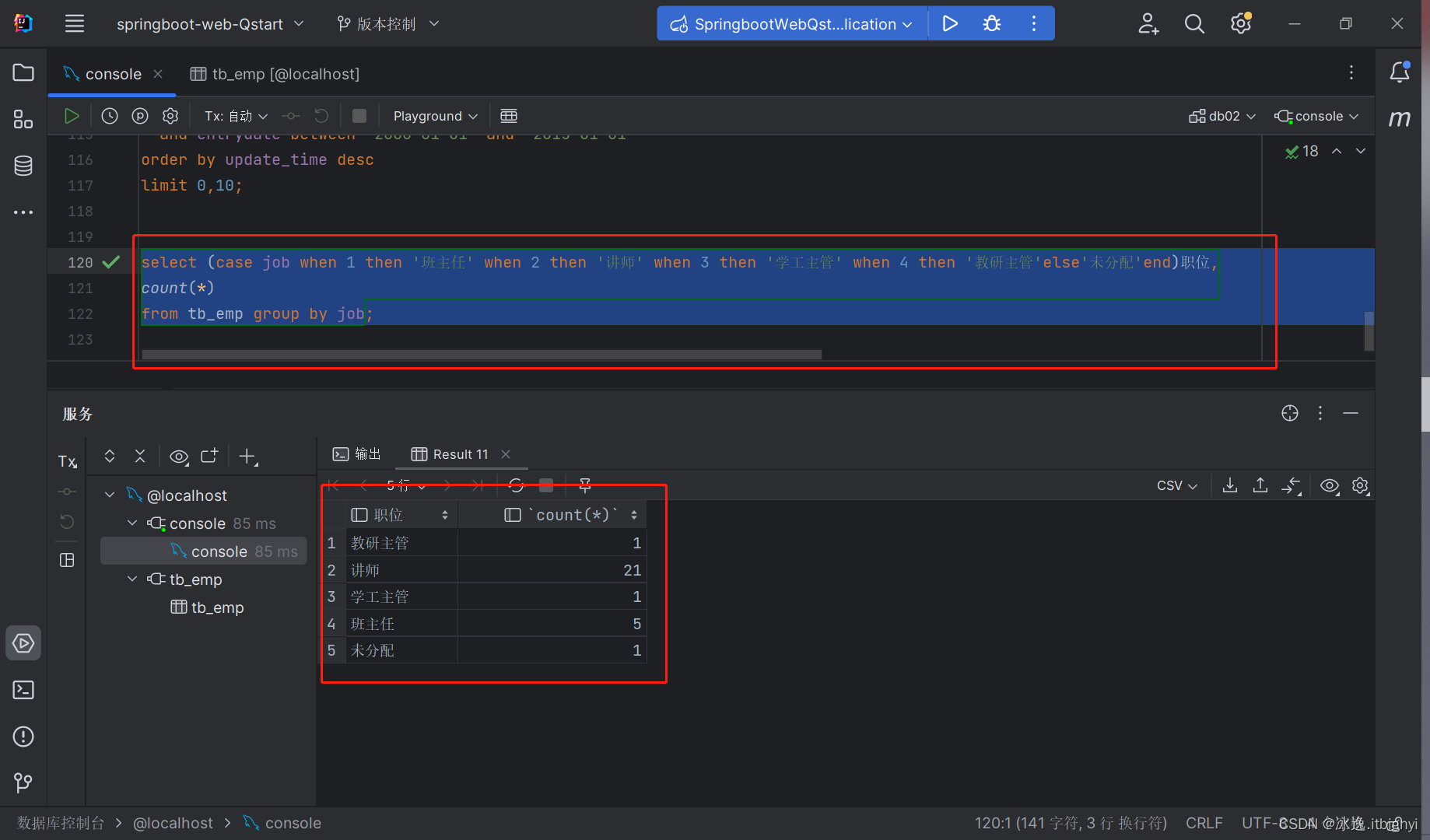DQL:用来查询数据库表中的记录
关键字:SELECT
语法:
select:字段列表
from:表名列表
where:条件列表
group by:分组列表
having:分组后条件列表
order by:排序字段列表
limit:分页参数
DQL-基本查询
查询多个字段:select 字段1,字段2,字段3 from 表名;
查询所有字段(通配符):select*from 表名;
设置别名:select 字段1[as 别名1],字段2[as 别名] from 表名;
去除重复记录:select distinct 字段列表 from 表名;
示例:
select name, entrydate from tb_emp;
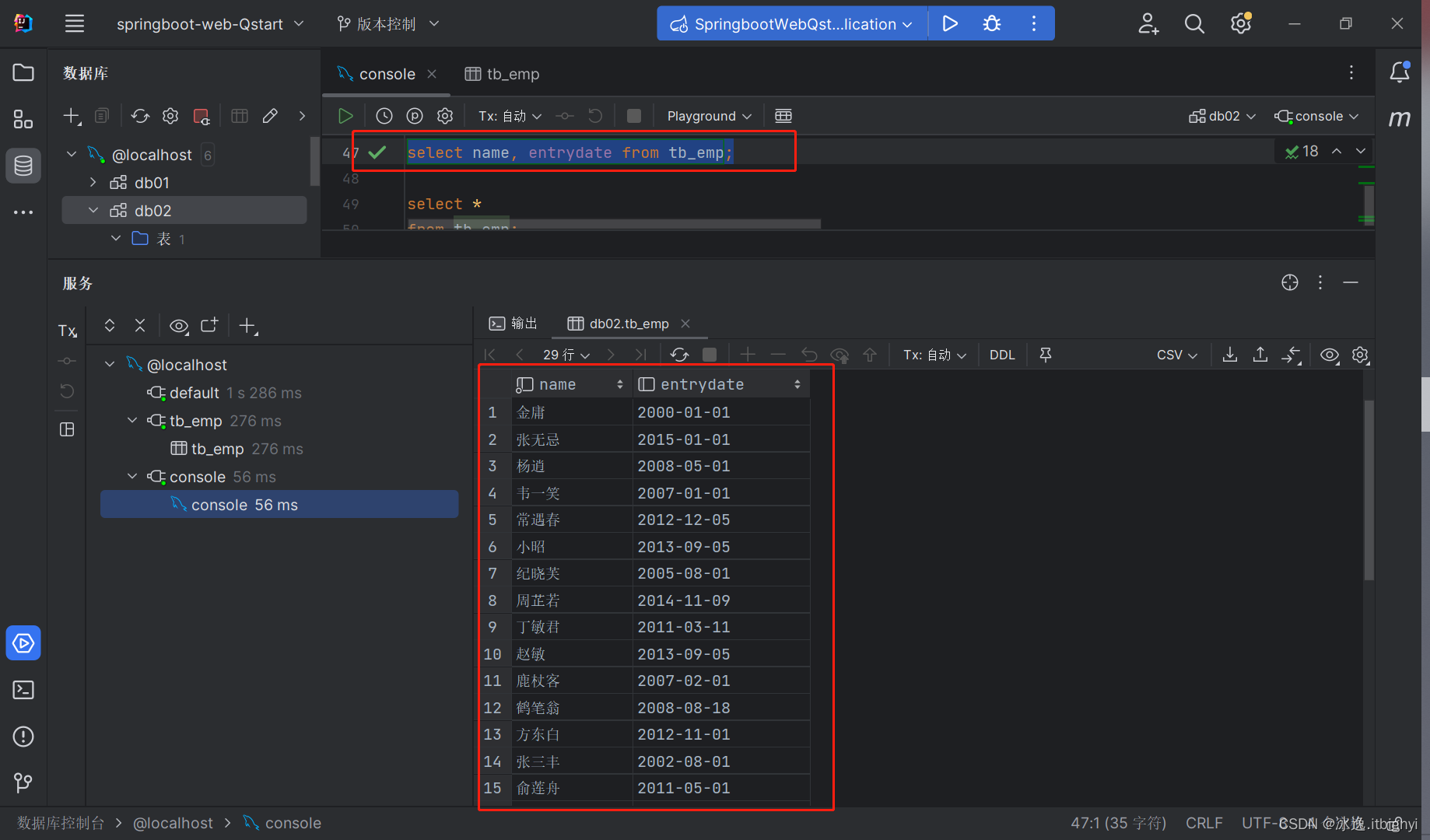
select *
from tb_emp;
select name as 姓名, entrydate as 入职日期 from tb_emp;
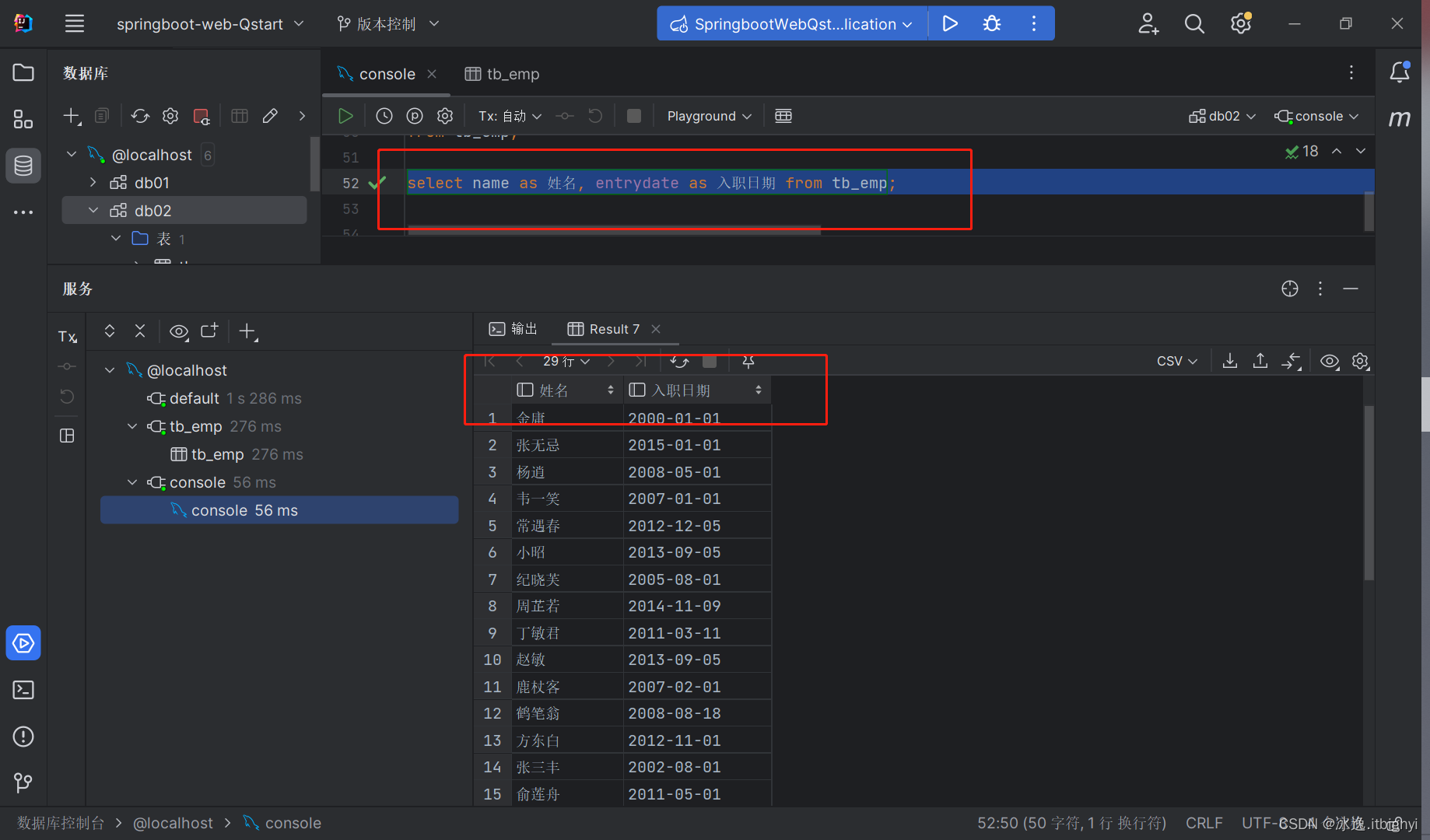
select distinct job from tb_emp;
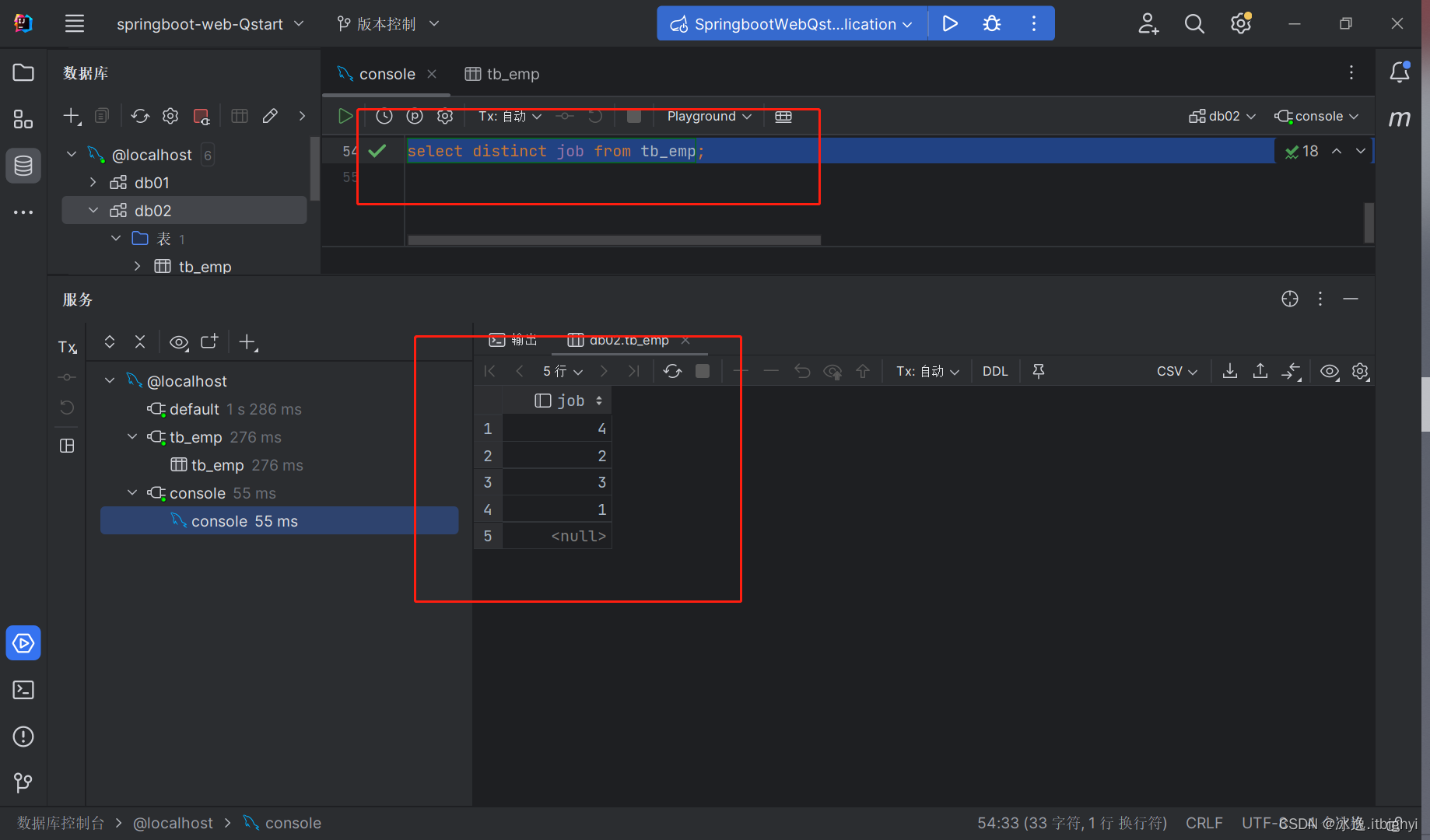
DQL-条件查询
条件查询:select 字段列表 from where 条件列表;


示例:
select *
from tb_emp where name='杨逍';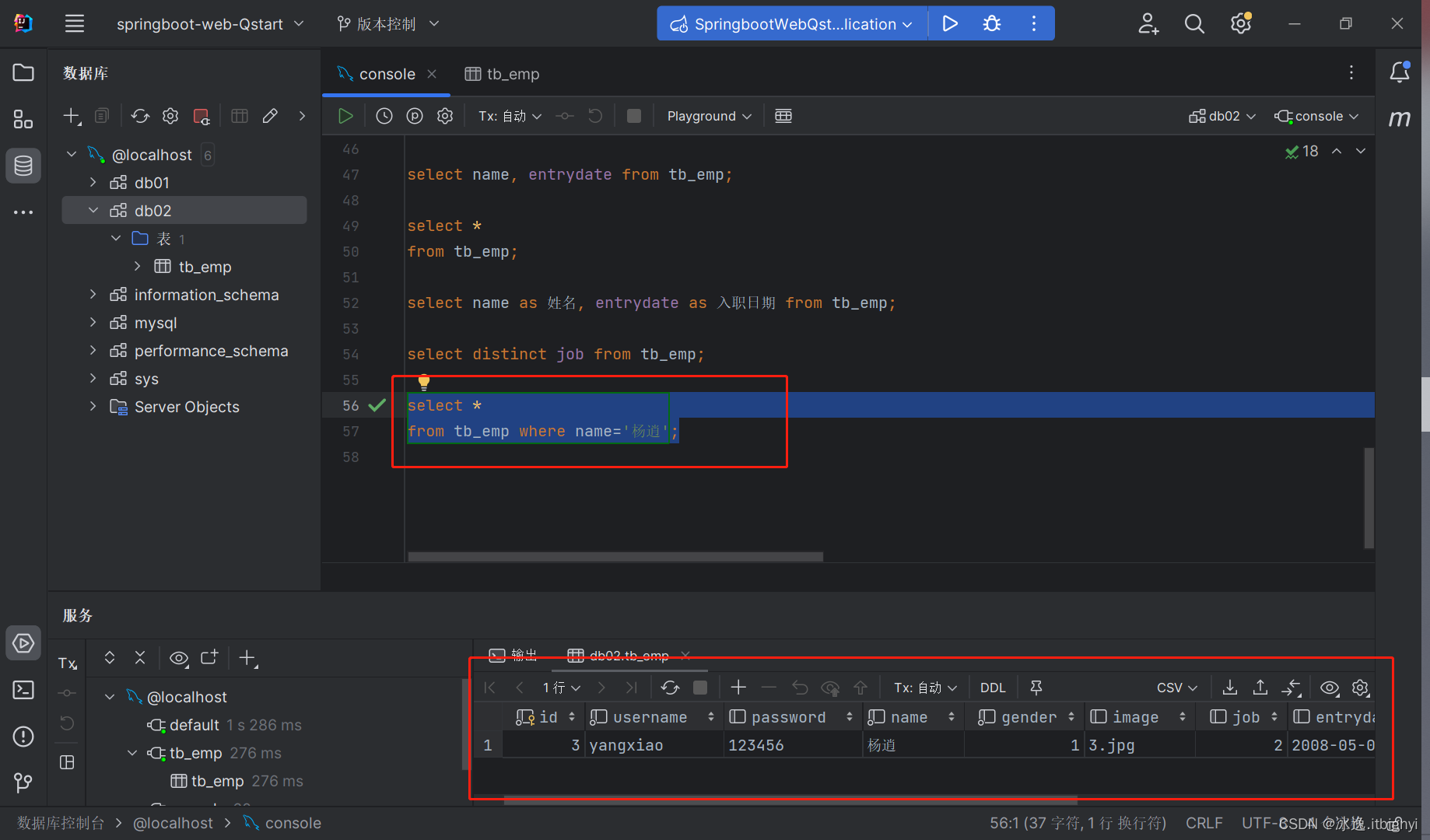
select *
from tb_emp where id<=5;
select *
from tb_emp where job is null;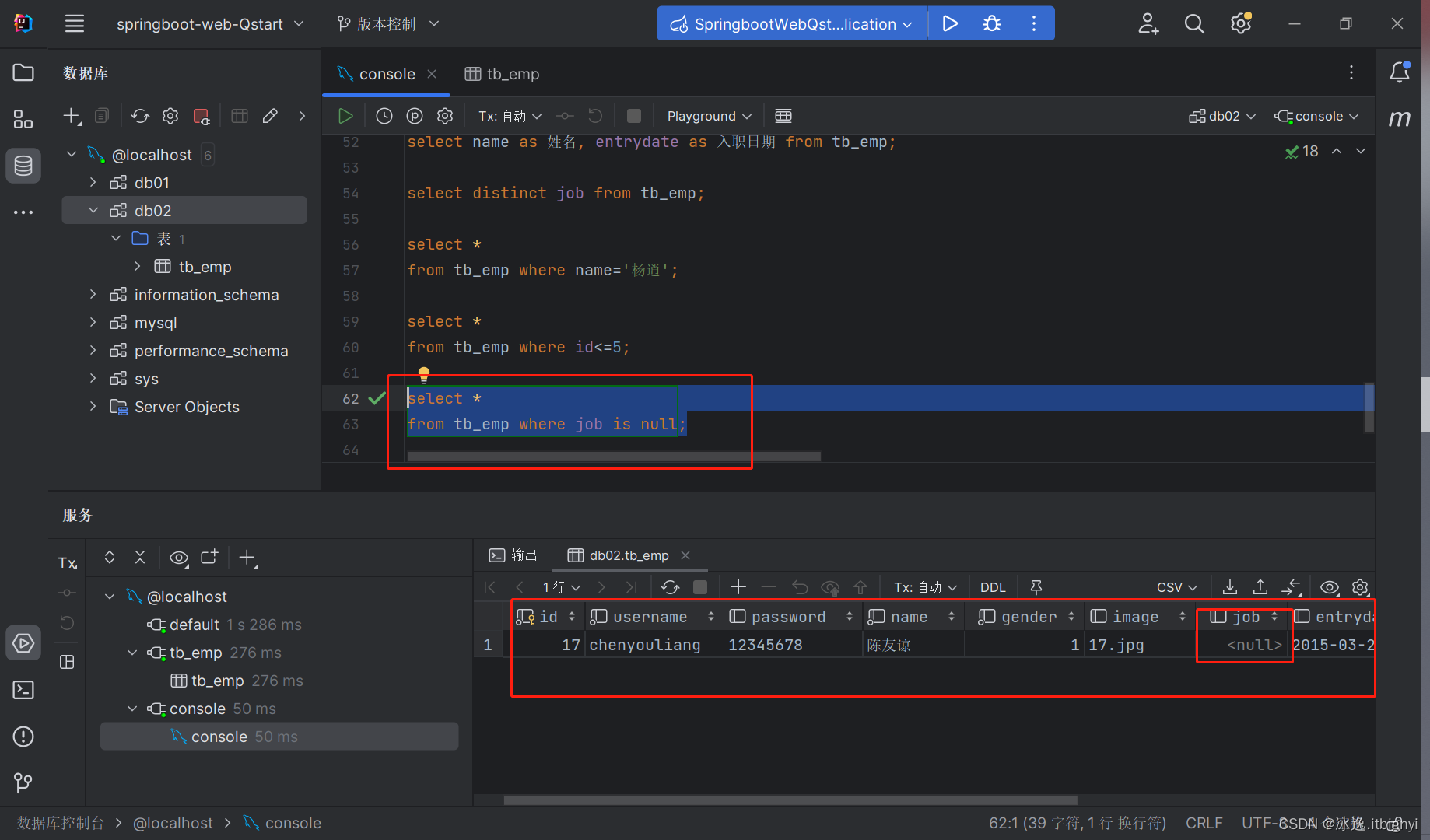
select *
from tb_emp where job is not null;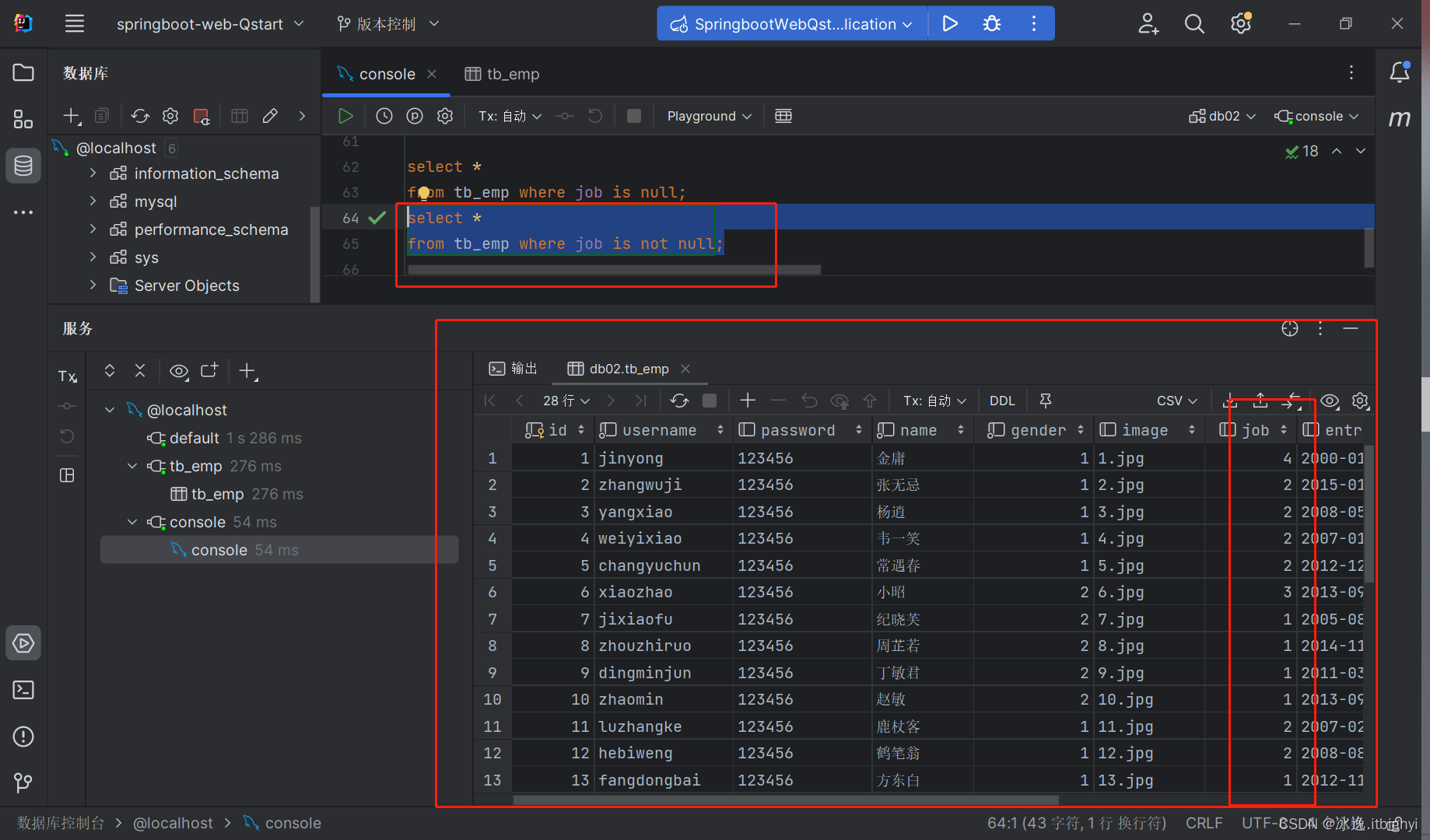
select *from tb_emp where password!=123456;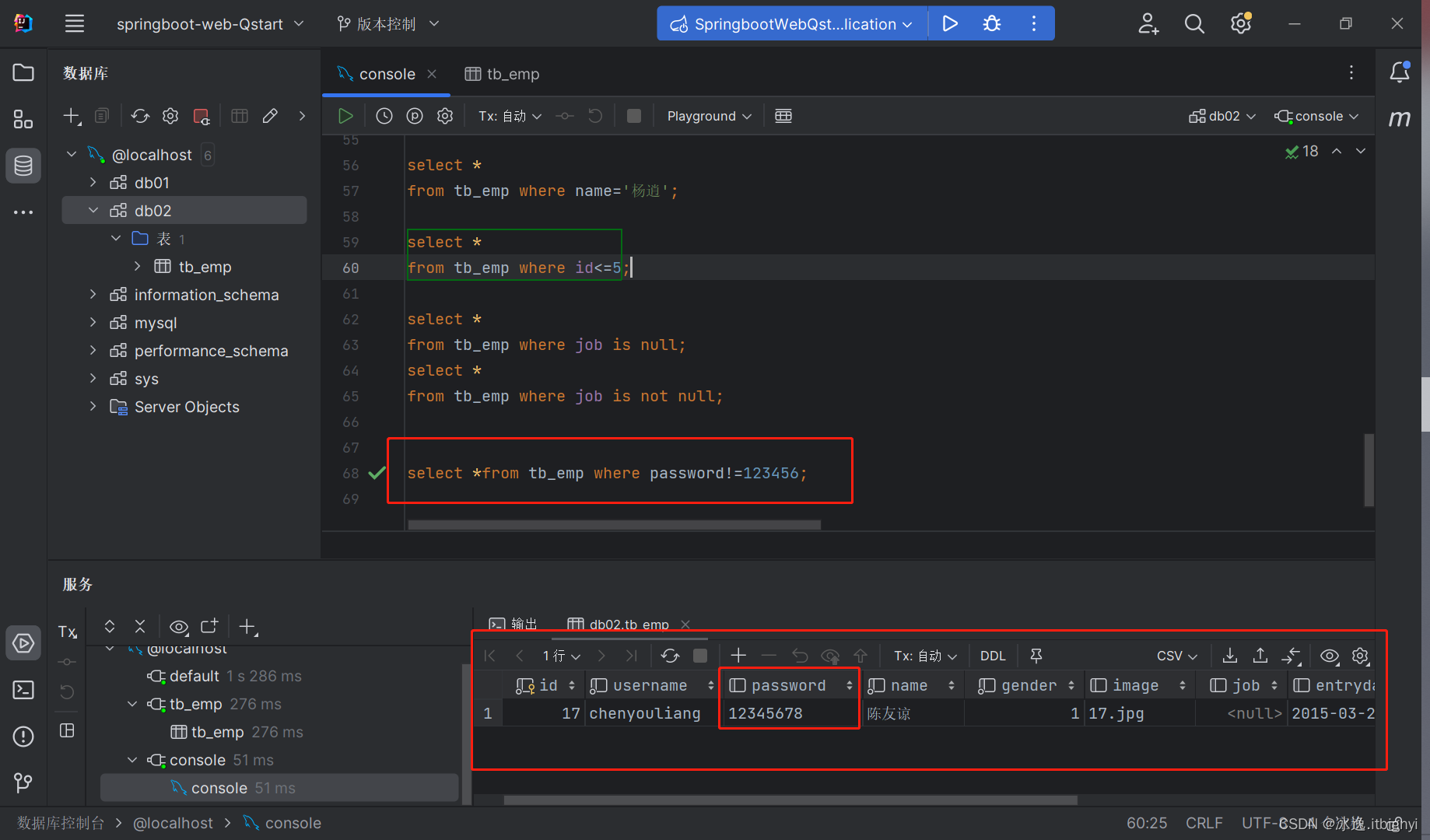
select *
from tb_emp
where entrydate between '2001-01-01' and '2010-01-01 '
and gender = 2;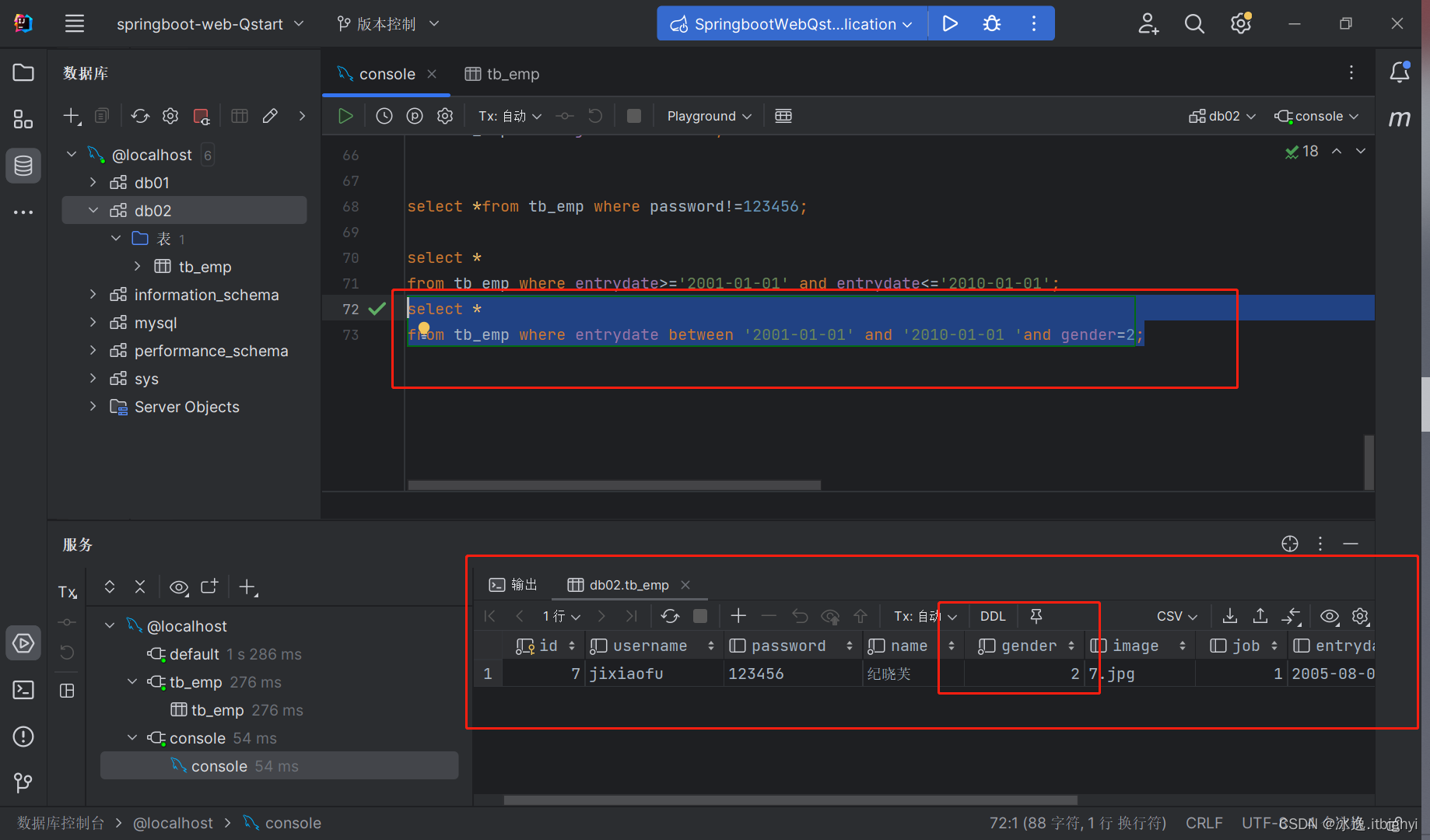
select *
from tb_emp
where job in (2, 3, 4);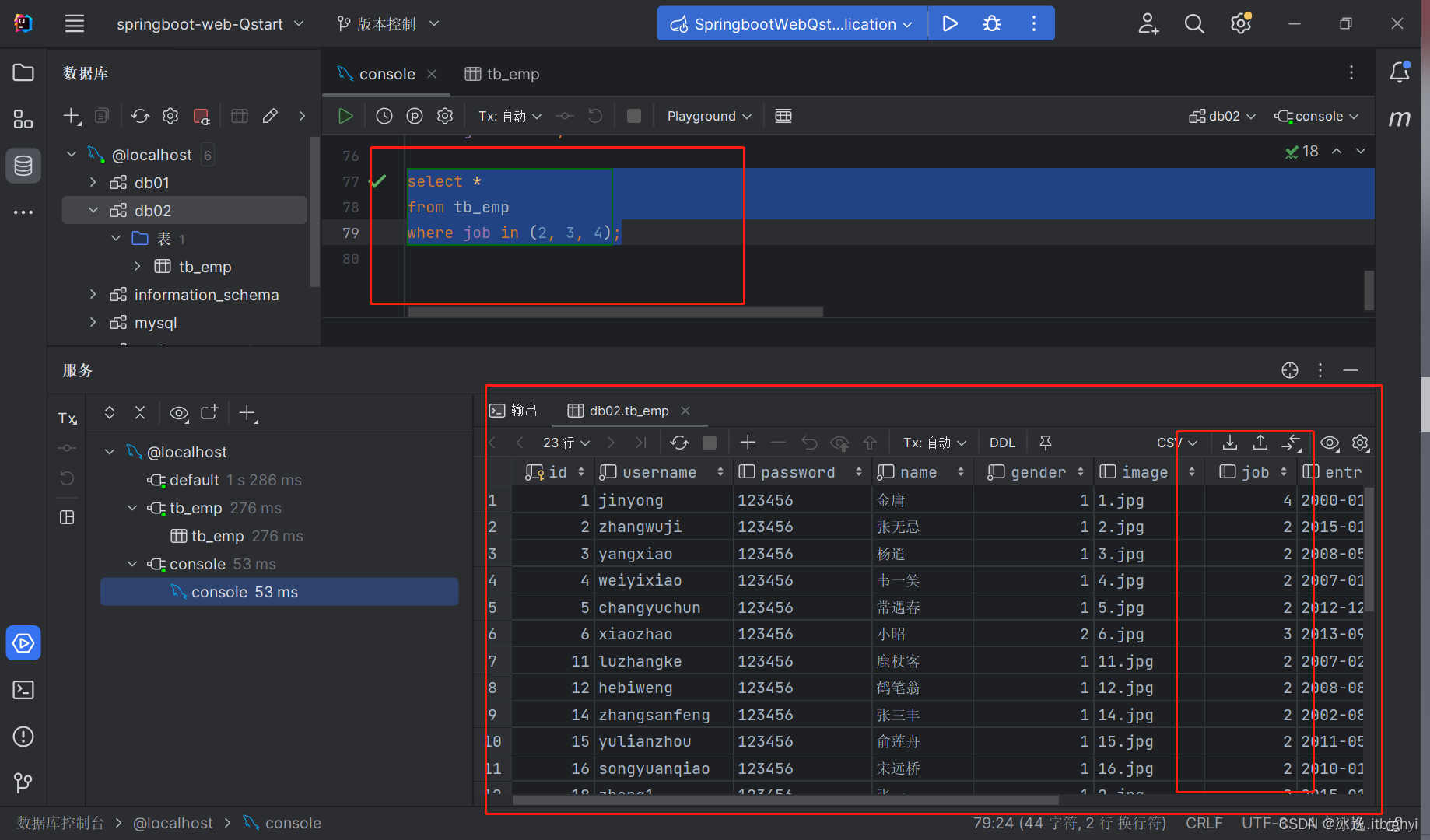
select *
from tb_emp
where name like '__';
select *
from tb_emp
where name like '张%';

DQL-分组查询
介绍:将一列数据作为一个整体,进行纵向计算
语法:select聚合函数(字段列表)from 表名;
函数:
count:统计数量
max:最大值
min:最小值
avg:平均值
sum: 求和
示例:
select count(id)from tb_emp;
select count(0)from tb_emp;
select count(*)from tb_emp;
select min(entrydate)from tb_emp;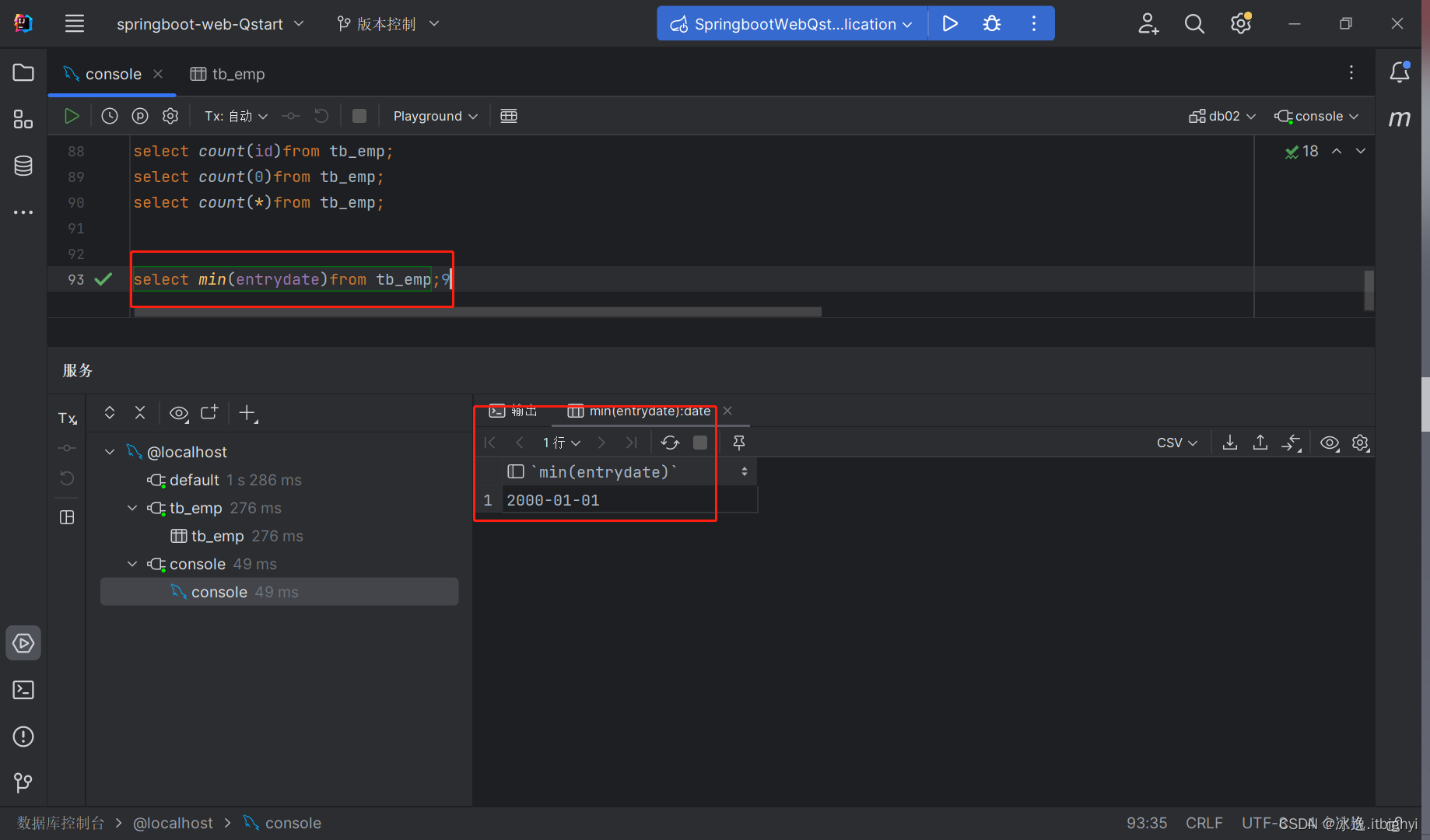
select avg(id)from tb_emp;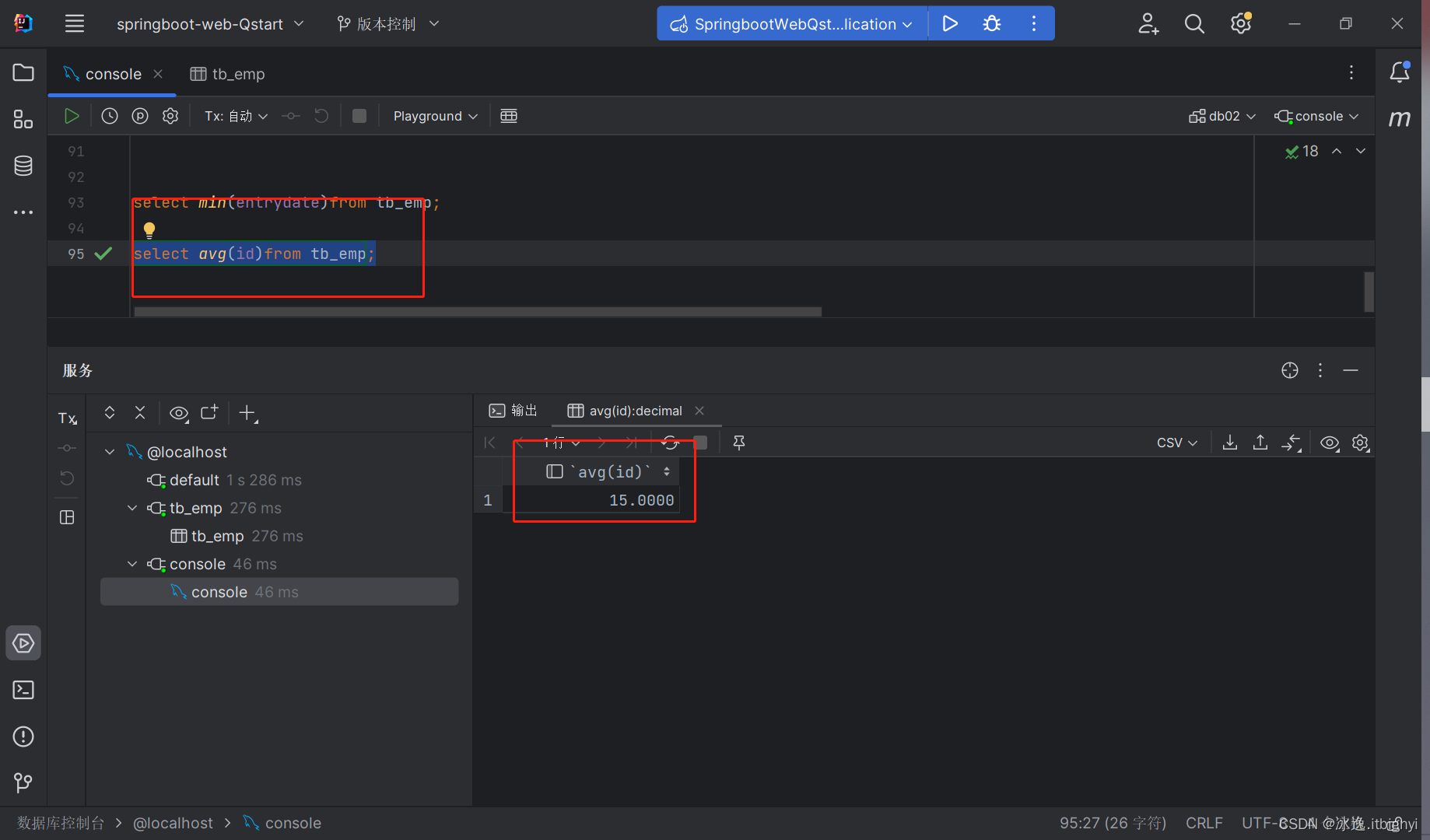 注意:null值不参与所有聚合函数运算
注意:null值不参与所有聚合函数运算
统计数量可以用:count(*) count(字段) count(常量) 推荐:count(*)
DQL-分组查询
select 字段列表 from 表名 [where 条件] group by 分组字段名 [having 分组后过滤条件]
select gender,count(*) from tb_emp group by gender;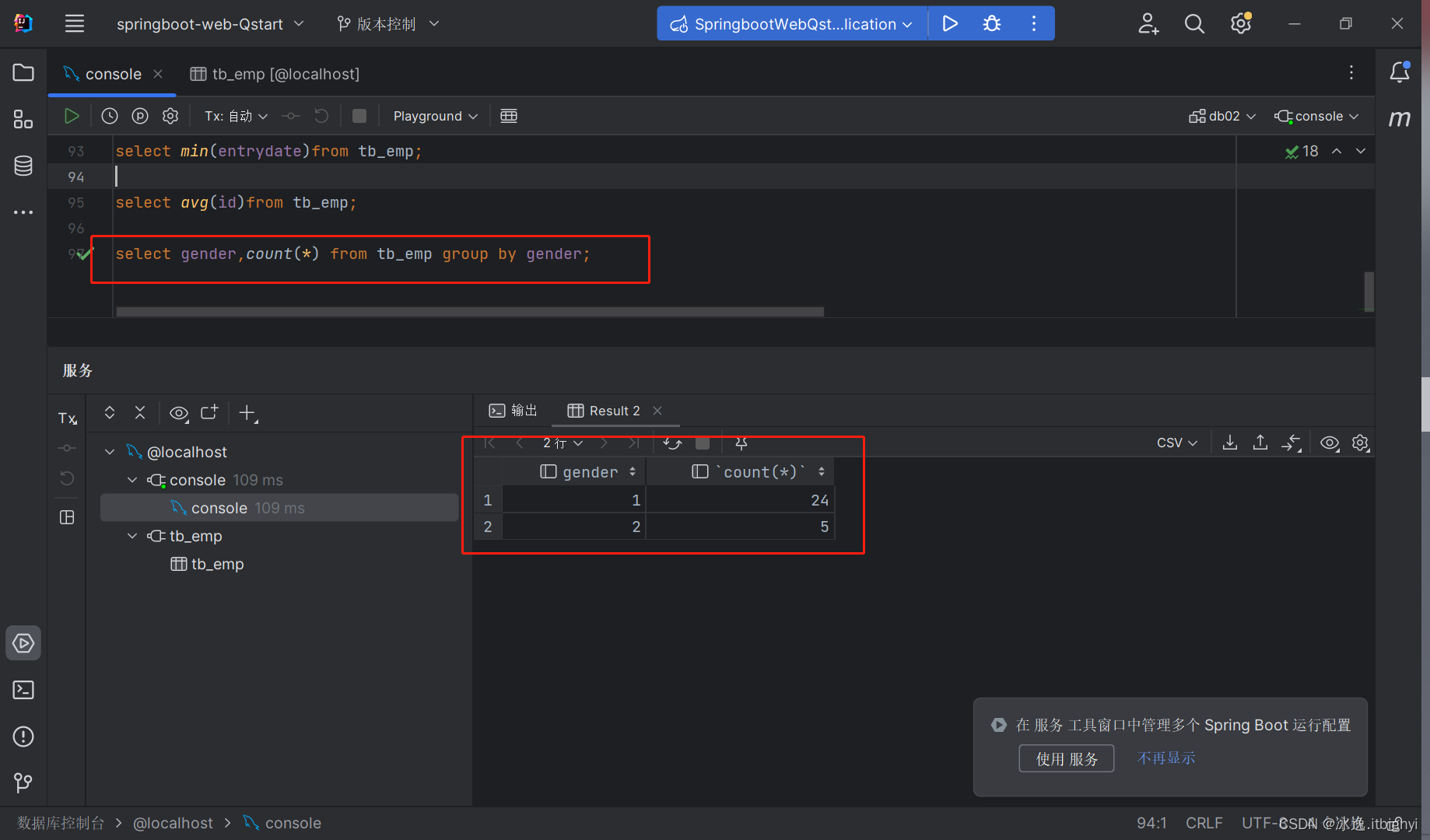
select job ,count(*) from tb_emp where entrydate<='2015-01-01' group by job having count(*)>=2;
where和having区别
1.执行时机不同:where是分组之前进行过滤,不满足where条件,不参与where条件,不参与分组;而having是分组之后对结果进行过滤
2.判断条件不同:where不能对聚合函数进行判断,而having可以
DQL-排序查询
条件查询:
select 字段列表 from 表名 [where 条件] [group by 分组字段]order by字段1 排序方式1,字段2 排序方式2;
ASC:升序(默认值)
DESC:降序
示例:
select *
from tb_emp order by entrydate;
select *
from tb_emp order by entrydate ,update_time desc ;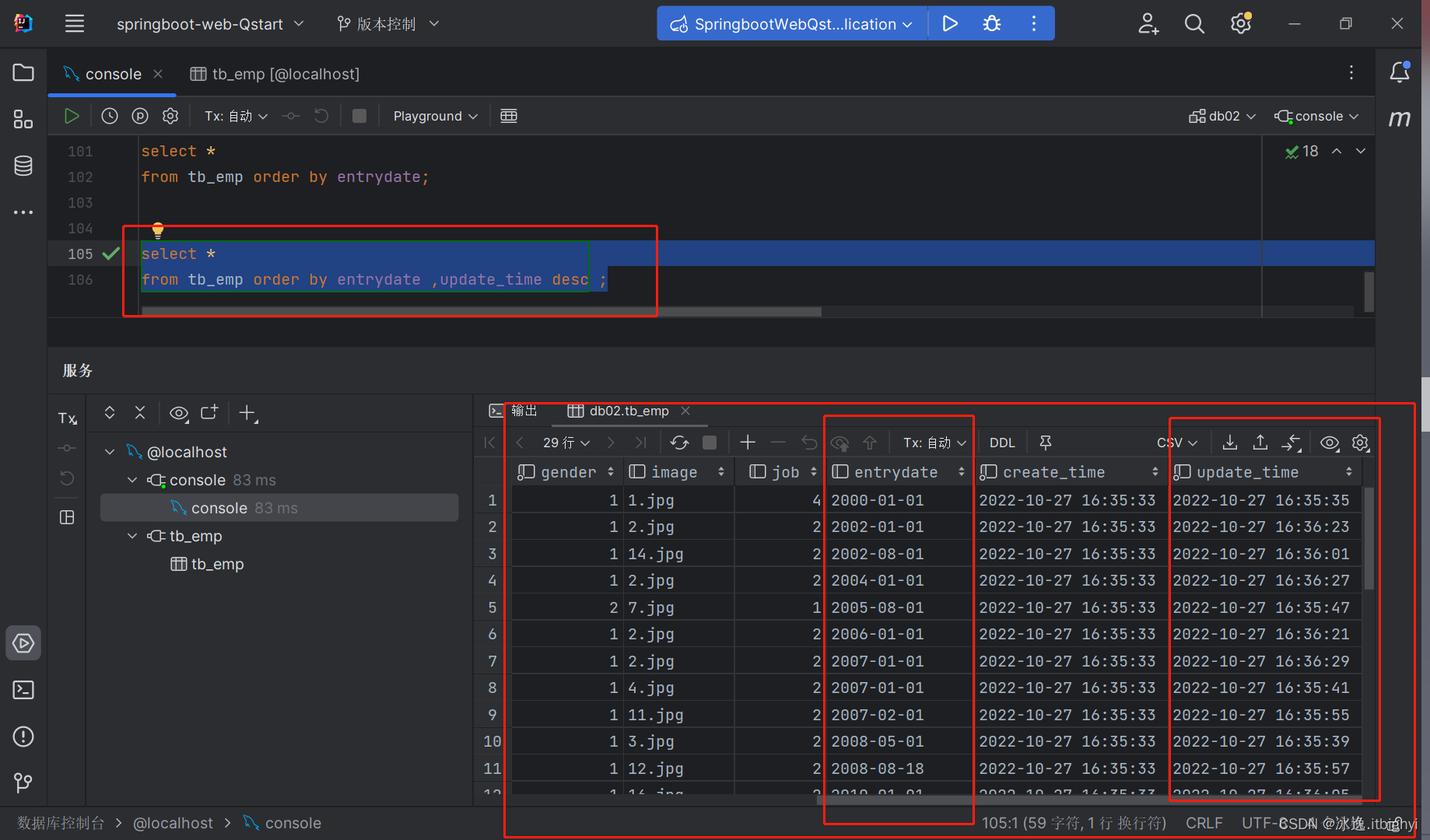
DQL-分页查询
select 字段列表 from 表名 limit 起始索引,查询记录数;
示例:
select *
from tb_emp limit 0,5;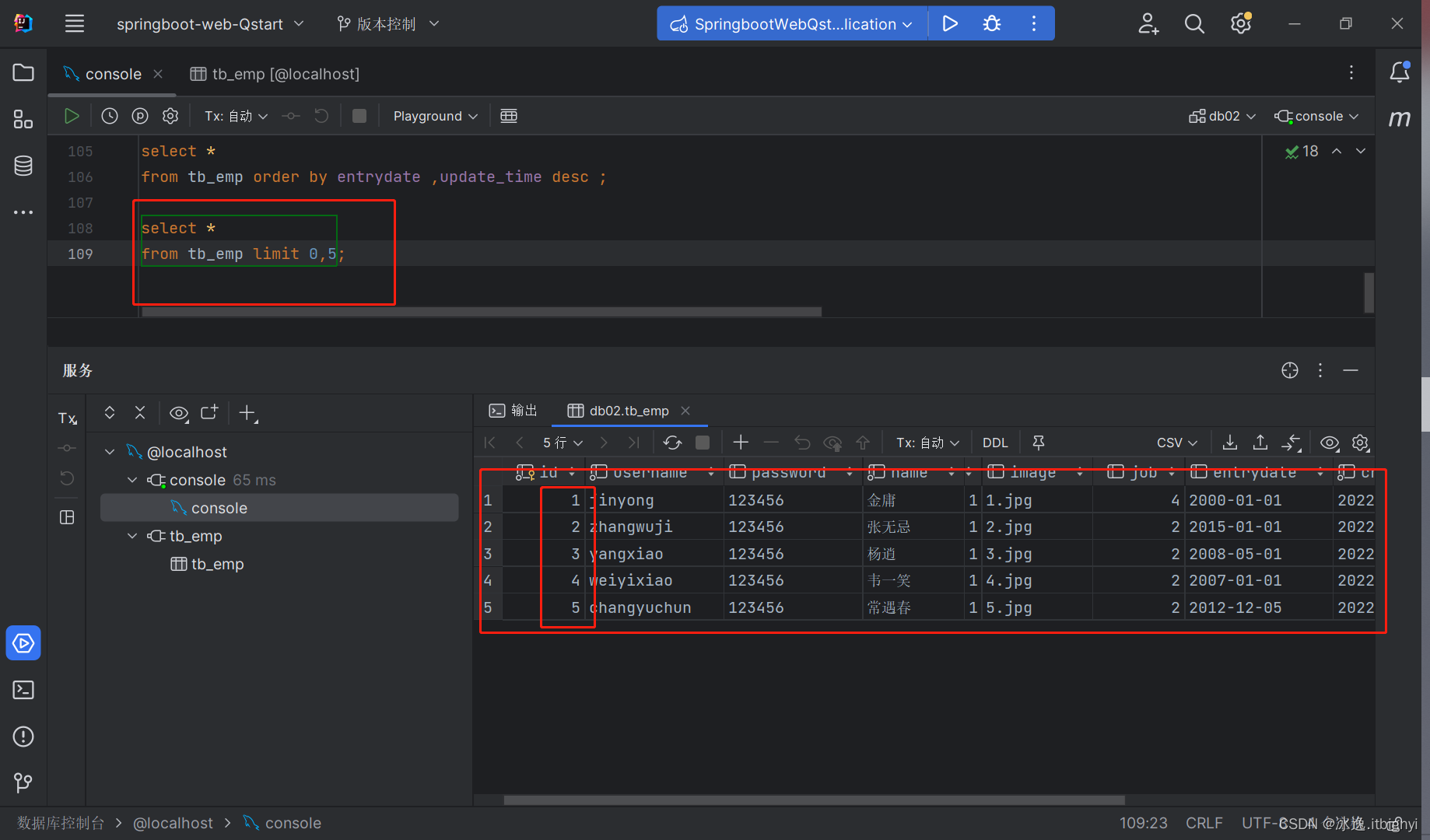
注意:
1.起始索引从0开始,起始索引=(查询页码-1)*每页显示记录数
2.分页查询是数据库的方言,不同的数据库有不同的实现,MySQL中是LIMT
3.如果查询的是第一页数据,起始索引可以省略,直接简写为limit10
案例:
select *
from tb_emp
where name like '张%'
and gender = 1
and entrydate between '2000-01-01' and '2015-01-01'
order by update_time desc
limit 0,10;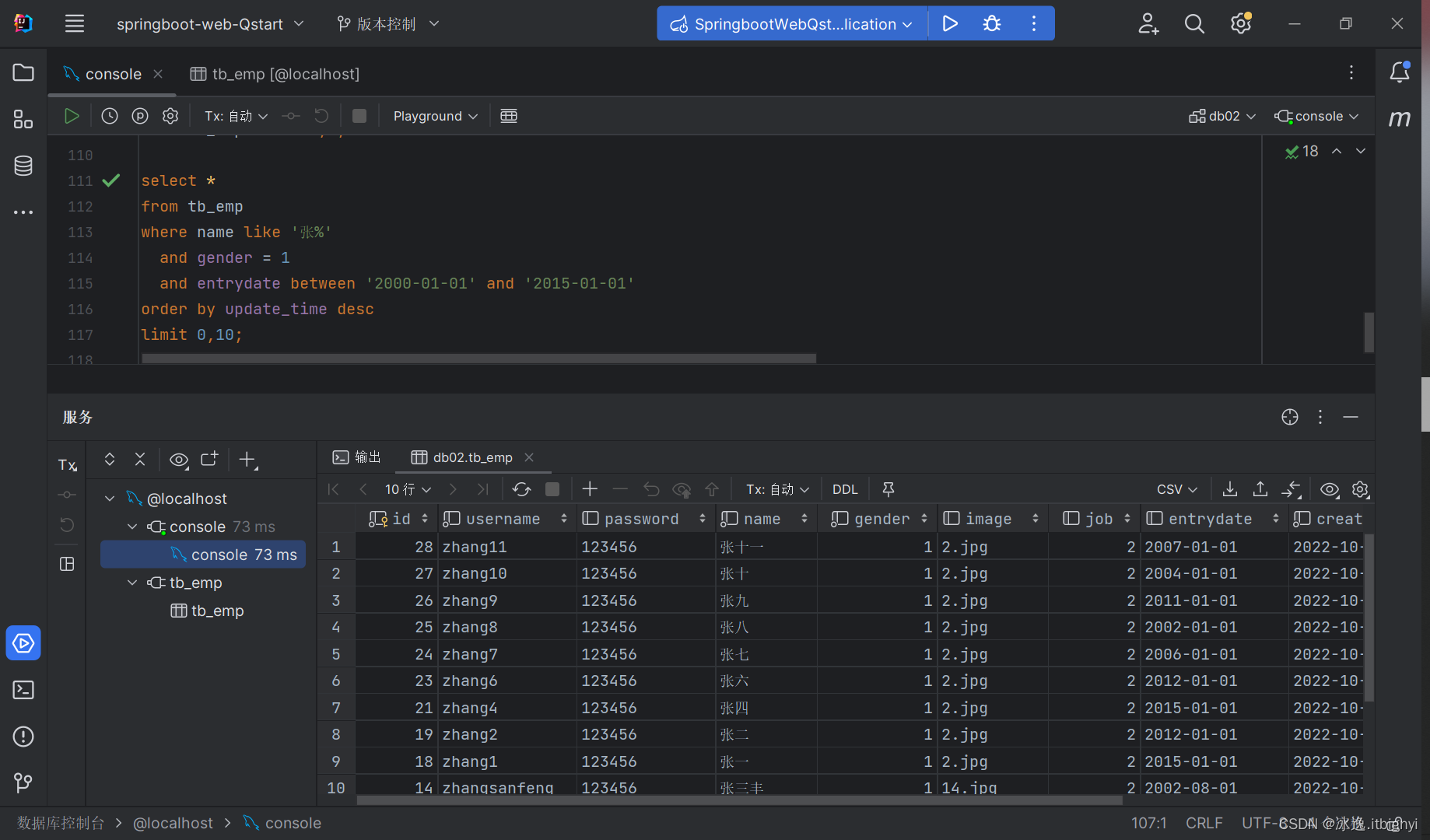
select (case job when 1 then '班主任' when 2 then '讲师' when 3 then '学工主管' when 4 then '教研主管'else'未分配'end)职位,
count(*)
from tb_emp group by job;